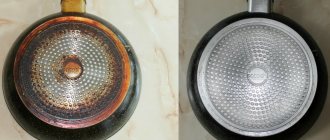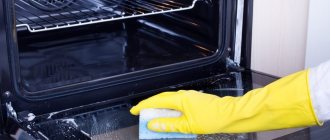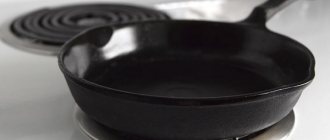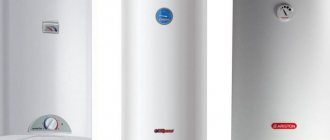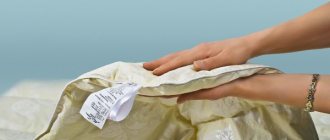Cleaning the oven is the most time-consuming cleaning process in the kitchen. Despite baking dishes with a lid, baking bags, and foil, grease, dirt, and unpleasant odors still accumulate inside the cabinet. In this article we will tell you about effective store-bought and folk remedies that have proven themselves in cleaning gas and electric ovens.
The best oven products
On the shelves of household chemical stores you can find many compositions for cleaning the oven from old grease and carbon deposits. Each manufacturer has a series for the kitchen. The most popular cleaning products on supermarket shelves are Shumanit (Israel), Azelit (Russia), Sanita (Russia), Frosh (Germany), Unicum Gold (Russia); from chain stores - Faberlic, Amway. Oven cleaning products are available in the form of gel, foam, spray, and powders. They differ in price and active formula. You can find reviews on the Internet for each manufacturer, but their effectiveness has been proven by time. In addition to store-bought options, there are folk compositions that you can prepare yourself.
Review of Faberlic oven cleaner (Faberlic)
For more than 10 years, Faberlic's grease and carbon remover for cleaning ovens and stoves has occupied a leading position. The transparent gel copes well with greasy splashes and carbon deposits. Faberlic oven cleaner contains caustic soda. This alkali effectively fights fresh and old stains. The main advantages of the Faberlik oven and stove cleaner:
- economical consumption;
- does not scratch the top layer;
- no pungent odor;
- removes all types of dirt;
- easy to clean.
Faberlic oven and stove cleaner is not suitable for aluminum, nickel-plated, chrome-plated and catalytic surfaces.
Pros and cons of steam cleaning your oven
Along with other self-cleaning systems, hydrolysis cleaning has its advantages and disadvantages. Its main advantage is that it is equally suitable for both gas and electric devices, including built-in models. Since the steam cleaning system is very simple, ovens with this function are affordable. In addition, steam cleaning requires minimal energy consumption.
Before choosing a model with steam cleaning, pay attention to its disadvantages. In this way, you cannot clean the oven immediately before cooking; you need to wait so that the odors of the detergents have time to dissipate and not mix with the aromas of the dish. In addition, steam cleaning does not completely remove grease and carbon deposits, but only makes it easier to remove them. This means that you still have to clean the walls manually, and steam may not be able to cope with stubborn stains.
Review of Amway oven cleaner (Amway)
The stove cleaner from the American manufacturer Amway removes greasy stains of varying degrees of complexity well. Not suitable for aluminum, painted or chrome plated boards.
Main advantages:
- thick consistency;
- economical consumption;
- removes contaminants of varying degrees of complexity;
- no pungent odor.
When working, you need to apply a small amount of gel to the surface, spread and wait half an hour. The gel breaks down dirt, and you can easily wash off any remaining product.
When using a product for Faberlic or Amway slabs, it may be necessary to re-use it if the slab is heavily soiled. This is fine. Heavy contamination requires a lot of effort.
Advantages and disadvantages of such cleaning
The method has been used for quite some time. This allows you to evaluate its pros and cons. Let's look at them.
Advantages:
- The method can be used for different ovens, regardless of their type, the material from which they are made, and other characteristics.
- This method is quite cheap. It is necessary to warm up the device for only half an hour, which does not require large amounts of electricity.
- The method is safe; the oven elements are not damaged during cleaning.
Softened deposits are better removed from internal surfaces, without requiring hard scrubbing and great effort.
Flaws:
- This is not self-cleaning. After hydrolysis, manual work will be required. All this makes the process quite long.
- When using special detergents, an unpleasant odor may appear. Therefore, you should not conduct experiments with unknown compositions.
- This method does not guarantee getting rid of difficult old stains. To remove them, you will have to carry out hydrolysis several times. But even this may not help.
Many modern ovens have an automatic steam cleaning function.
Folk remedies for cleaning the oven
If you don’t have any purchased cleaning compounds in your house, then make a proven folk remedy. It can be prepared at home from soda, vinegar and citric acid. Mix the ingredients and get a cleaning mass. Cleaning the oven with vinegar is suitable for light to medium stains. Proportions: 20 grams of citric acid; 1 tbsp. soda; 0.5 cups table vinegar. How to clean the cabinet using the resulting mass:
- Heat the oven to 60 degrees.
- We wipe the walls, avoiding heating elements.
- Wash off the residue with a soft bristle brush and water after 30 minutes.
How to clean oven glass
The door glass requires constant care. If you do not clean it promptly, it will turn dull yellow. Nowadays, electrical cabinets are made with the ability to remove the door glass for easy cleaning. We’ll tell you a couple of simple ways to clean it and restore it to its original condition if the oven glass cannot be removed. Use store-bought and home-prepared formulations:
- Any compositions intended for cleaning the oven.
- Dishwashing detergents. Choose one that removes grease well, such as Fairy. Apply a thick layer to the stains and leave for 5-10 minutes. Then delete.
- A spray of vinegar and citric acid in a 1:1 ratio. Perfectly cleans glass surfaces with light or medium contamination. It is more convenient to apply with a spray and wipe with a soft brush.
- Paste of baking soda and hydrogen peroxide. Great for old grease stains. Apply to glass and leave for 15-20 minutes. Brush gently. The procedure can be repeated.
Laundry soap is a quick and non-obvious option to get rid of old greasy deposits between the glasses. You will need a container and laundry soap. We rub the soap, dilute the shavings in hot water in a container. You can wash the oven door between the glasses by preheating the oven to 60 degrees for 15-20 minutes. Turn it off, apply the solution, let it cool, and wash off the greasy film.
Many home remedies require heating the oven. This will help melt away old fat, making it easier to remove.
How the steam self-cleaning function works
Many housewives worry that frequent use of steam cleaning in combination with detergents will lead to rust inside the cabinet. These worries are in vain; manufacturers of high-quality models have foreseen this point and make ovens coated inside with a special enamel that easily withstands the effects of chemicals, including those containing acids and alkalis.
How exactly cleaning will take place depends on the oven model. Some of them are equipped with a special program that controls the steam supply time. Other cabinets require the use not of water, but of special cleaning substances, which are placed in a special container, after which the heating mechanism is turned on. This method softens the greasy coating on the walls, and all that remains is to remove it with a sponge when the oven cools down. Water can be collected in a baking tray or in a special container that comes with the kit, or in a recess at the bottom of the oven, it all depends on the brand and model of the cabinet.
The hydrolysis function cannot be called completely independent; it only makes a person’s work easier, making the fatty deposit softer, so that all that remains is to pick it up with a rag
Although steam cleaning is very common, it is far from completely self-sufficient. In any case, you will have to remove carbon deposits and grease yourself using a sponge or cloth. After the oven walls are in proper shape, they need to be wiped dry and the chamber left open for ventilation.
Hydrolysis cleaning is good because it involves the use of cleaning without the use of detergents. It is recommended to clean microwaves using the same method; you just need to place a plate of water and turn on the microwave for a few minutes.
Cleaning the oven with ammonia
A popular home method to get rid of dirt in the oven without using store-bought chemicals. Ammonia is good at removing old burnt-on fat and will help clean the walls of soot. The only negative is that it takes about 10 hours to clean an electric oven. You will need 2 deep glass plates, boiling water, 200 ml of ammonia. First, preheat the oven to 60 degrees and turn it off. Pour half a liter of boiling water into one container and place it on the lower tier of the oven. Pour alcohol into the second container and place it on the middle tier. Close the door and leave for 9-10 hours. Next we remove all fat deposits. After cleaning, you should ventilate the oven for several hours.
How to steam clean without hydrolysis technology
Self-hydrolysis involves the use of baking trays with high sides or large baking containers. Water is poured into the container (500–700 ml is enough for an average oven), placed on the lowest tier or placed on the bottom (it all depends on the model of the stove or stove). Turn on the heating.
In inexpensive models, a container or recess may not be provided.
As soon as steam begins to form, the heat is reduced. The hydrolysis process has started. When the cabinet heats up from the outside, open the door and check the degree of plaque softening. You should not heat the stove for more than half an hour.
When the appliance finishes the cleaning process, you need to open the door so that the inside surface cools down a little.
Important! During “water procedures” the operation of the device must be monitored and the door must be opened slightly if necessary. When the water has evaporated, remove the pan.
Cleaning the oven with steam
Steam cleaning or hydrolysis cleaning is the easiest way to clean cabinet walls and interior glass. This method allows you to quickly deal with light and medium stains. You can clean your oven with steam in two ways - with or without a steam generator. For the method without a steam generator, we need a baking tray, water, soap or dishwashing liquid. Place the baking sheet with the solution in the oven and heat it to 200 degrees. When heated, the soap solution turns into steam and settles on the walls and glass. Leave the oven running for 15-20 minutes, turn it off and wait until the temperature drops below 50 degrees. We remove dirt stains from the walls with a soft cloth. Thanks to the steam, dirt can be easily wiped off. When using a steam generator, you need to pour water into it and select a suitable nozzle, for example, according to the type of tube. Treat walls and old stains with steam. Then use a sponge to remove the dirt.
Modern ovens, such as Hephaestus, Bosh, Electrolux, Hansa, have a built-in steam cleaning function. When it is turned on, the oven independently regulates the temperature and operating time; after a sound signal, you can open the door and wipe the walls. Typically, in such models, water is poured into the bottom of the oven.
Hydrolysis oven cleaning
Most likely, this simple but quite effective cleaning method is a folk invention, because every housewife who has had to wash dried dirt from dishes is familiar with it. The essence of the method is the preliminary softening of fats that have reached the walls of the oven, for which water steam is used. To do this, simply take one or two containers of water and place them inside the oven. Then the oven is heated to 50-90 °C and after 30-40 minutes it will be much easier to clean off greasy stains or pies that have dripped onto the bottom of the oven.
In fact, oven manufacturers did not invent a wheel, but simply made a recess in the oven bottom where you can pour water, added a timer for 30-40 minutes and said that such ovens are equipped with a hydrolysis cleaning system. Additionally, for such ovens they began to sell cleaning products that help soften fats and burnt dough under the influence of hot steam.
To the credit of the manufacturers, they did not stop there - the cleaning method itself is unlikely to be improved, but the enamel for oven walls is gradually improving. Its acid resistance increases, and the even and smooth surface has a molecular structure that prevents fat particles from penetrating into it.
+ Advantages of the hydrolysis cleaning method
- Extremely economical - you only need water and a little detergent. Energy costs are minimal since there is no need to heat the oven to high temperatures.
- Safety – no overheating and no danger of getting burned.
- Despite the simplicity and obviousness of this solution, it significantly increases the cleaning efficiency.
— Disadvantages of the hydrolysis method of purification
- You will still have to work hard on complex contaminants.
- You have to set aside separate time for cleaning. In this case, the oven must be cooled down after cooking.
- The method, even by stretch of the imagination, cannot be called automatic - rather, it is simply a simplification of manual cleaning.
How to clean the oven from carbon deposits
While cooking, sauces and juices may spill onto the lower rack and get baked on it. If you don’t get rid of the dirt right away, carbon deposits will form when you reuse the oven. Many people try to wipe off old carbon deposits with metal sponges or a knife, which is absolutely forbidden to do, as this can damage the top layer of the oven. Tips on how to get rid of soot. If carbon deposits have already formed, try cleaning them with any slab cleaner. Don't be afraid to repeat the procedure. If you don't want to use store-bought household chemicals, make a solution of soda and vinegar, or use a steam generator.
Good habit: if something spills on the lower tier of the oven, wipe up the liquid with a regular damp cloth immediately after cooking, after the oven has cooled down.
What other solutions can there be for cleaning the oven?
The simplest method for cleaning the oven is to purchase household chemicals specifically designed for this purpose. Detergents for ovens can be purchased in stores in the household chemicals department. The cost of such reagents is usually low, and one bottle lasts a long time. When cleaning using this method, you need to know that any contamination is better removed if it is first moistened with water. The disadvantage of using such products is their overly aggressive effect on the inner surface of the oven. In some cases, household chemicals can damage the enamel.
Some kitchen ovens use a special self-cleaning enamel. Fatty deposits practically do not stick to such a coating. And if something burns, the dirt can be easily removed with a damp cloth without using household chemicals. Typically, the pores of such enamel contain catalyst particles. This promotes the process of fat decomposition. This cleaning method is called catalytic. This method is considered low-temperature, since it is performed by heating the oven to 140-200 degrees Celsius. To increase the effectiveness of this method, manufacturers suggest installing an additional filter that absorbs fat into devices with such a cleaning system.
Another way to clean a household appliance is pyrolysis. With pyrolytic cleaning, all food residues and fat are completely burned. But this is also the most severe method of cleaning. After using it, only ashes remain in the oven chamber. Pyrolysis inside the oven burns food and fat at high temperatures. At the same time, during this process the oven door is blocked, so it is impossible to even open it slightly on your own. At high temperatures, a household appliance experiences enormous stress. Such devices are offered by manufacturers Bosch, Gaggenau and others. They provide a level pyrolysis system. Some contaminants, such as food particles, can be burned at 200-300 degrees Celsius, which is why the level system was developed. It allows you to save energy during the cleaning process.
We recommend: What is a pizza maker, which one is better and what else can you cook in it?
How to clean the oven from grease
To avoid cleaning household appliances from taking several hours, do it regularly. When cooking in the oven every day, wipe it once a week with special products and a regular wet cloth after cooking, when the oven is still warm. This will prevent the appearance of dried grease stains and old carbon deposits. If you clean your stove regularly, small stains can be easily removed with soapy water or specialized oven cleaners. A spray based on citric acid copes well with stains of varying complexity.
Recommendations for cleaning the oven from old grease. A good way to break down fatty deposits and easily clean the walls is by steaming the oven. It is necessary to make a soap solution, place the tray with the solution in the cabinet. Preheat the oven to 180-200 degrees for 10-20 minutes. When the cabinet has cooled down, you can easily wipe off the grease film with a soft sponge. Or use a household steam generator. It supplies steam already hot. With its help, you will soak stubborn grease stains and can remove them later with specialized means.
Ovens with hydrolysis function
Hydrolysis cleaning is suitable for any type of oven.
Manufacturers produce models with different oven self-cleaning functions. The hydrolysis function is called Aqua Clean. It is indicated by different icons on the control panel. It could be a “drop on the palm” or a “cloud”. The cleaning process starts from the panel.
There is a small recess at the bottom of the oven for water. A special hydrolysis agent or any anti-fat composition is mixed in 1/2 liter of water and poured into the recess. You can also add plain water without special means.
Next, turn on the Aqua Clean option. The program runs for 40 minutes at a temperature of +50...+90°C.
The program indicates completion with a sound signal. After this, the oven is allowed to cool and any remaining dirt is removed with a sponge or cloth.
Reference. Hydrolysis treatment is recommended to be carried out once every 2 weeks.
How to clean an old oven
If you need to clean an old gas stove or a very dirty electric oven, it is better to stock up on store-bought products - this will save you time. You can also try traditional methods - soda paste, heat the oven with soapy water, try cleaning with ammonia. If the oven has not been looked after for a long time and the coating is quite old, it is better to use professional products.
If the product does not remove the stain the first time, use it a second and third time. One of the most effective means for removing old oven stains is Schumanite.
Thanks to a special chemical formula, you will quickly cope with the task. Many products need to be applied to the surface and wait 15-30 minutes. During this time, they eat away the fat and you just need to remove it with a sponge. At the end of cleaning, rinse the cabinet thoroughly with water to remove any remaining chemicals. When using chemical compounds, do not forget to use rubber gloves and ventilate the room.
How to clean a baking sheet from the oven
Cleaning the baking sheet will not be difficult for you. In most cases, it is enough to simply soak it in a hot soapy solution and remove any remaining dirt with a sponge. Another way is to wash the baking sheet in the dishwasher if it fits in it.
If the baking sheet is old and the dirt cannot be washed off, the heating method will come to the rescue: fill the baking sheet with soapy water, put it in the oven at 120-150 degrees for 10-15 minutes. Once the pan has boiled, it will be easy to clean. For complex stains, additionally use special compositions for cleaning ovens.
Basic types of cleaning
It is most convenient to divide cleaning methods according to the principle of the main action, which can be achieved using the functionality of the oven or using additional detergents and devices.
Pyrolytic cleaning
This method of maintaining cleanliness works using high temperatures and does not require first emptying the oven from the baking trays. All contaminants are burned at such temperatures and all that remains is to remove the layer of soot from the walls. This method is the most effective, but has both advantages and disadvantages.
Main disadvantages:
- Ovens capable of heating to such temperatures are usually more expensive than their analogues.
- Cleaning with this method requires high energy costs
- With such heating, there is a high probability of damaging nearby furniture or equipment.
- During the cleaning process, an unpleasant burning smell appears, which is difficult to get rid of even with the hood on.
Pros:
- In this way, even the heaviest contaminants are destroyed
- No additional costs for cleaning products required
- Mechanical actions are not necessary for pyrolytic cleaning.
NOTE: Only an electric oven can be cleaned using this method, since the maximum temperature for a gas oven is considered to be 250 degrees. The pyrolytic method is most suitable for those who use the oven for cooking several times a week; in all other cases, any cleaning method at lower temperatures will be sufficient.
Catalytic purification
This cleaning method can be called the most economical, since the process can also occur during cooking. It is also worth noting its versatility; the use of the catalytic method is equally effective in both gas and electric ovens. The mechanism is based on the characteristics of the oven walls themselves; they have roughness and numerous depressions - pores. The latter contain a special substance that breaks down fats into their components; the only thing the housewife can do is wipe the surfaces of the still hot oven.
Cleaning with detergents
In this case, the main task is to choose the right detergent that will not damage the oven walls or scratch the coating. It is also necessary to thoroughly rinse off the chosen product after use, otherwise, under the influence of high temperatures, it can destroy the surface, and harmful chemical compounds can get onto dishes that are cooked in the oven. The main disadvantage is the resources spent on the cleaning process; severe contamination takes a lot of time and a lot of physical effort.
IMPORTANT:
Oven manufacturers recommend not using chemicals that contain abrasives, and also avoid cleaning with metal sponges. Such methods of maintaining cleanliness can lead to deep damage to the surface of the walls, after which even the built-in cleaning functions will not be able to work correctly.
Hydrolysis cleaning
One of the newest cleaning methods, which is based on the action of steam. Hydrolysis is carried out at low temperatures, which does not require high energy costs and also prevents excessive heating of the oven walls. To use this method, it is necessary to pour hydrolysis liquid into the baking tray, which is responsible for softening dried fat or other contaminants when the temperature rises. In this case, the fat flows into a special tray, however, if the dirt is strong, you may need to scrub it off manually, and it is not necessary to resort to the use of chemicals; the dirt can be cleaned using ordinary soda.
Hydrolysis cleaning in modern ovens
Modern technology with a hydrolysis cleaning function is produced in a special way using high-quality enamel, which in turn is resistant to dirt and does not allow it to penetrate deeply. The main cleaning work is done using hot steam; the oven must be heated from 100 to 200 degrees, depending on the severity of the contamination.
The process itself in ovens with a built-in hydrolysis function can be divided into several key stages:
- First of all, you need to remove all foreign objects and kitchen utensils from the oven.
- Next, you need to pour a small amount of water onto the bottom of the oven, 200-400 ml is enough. After this, the oven door should be closed tightly.
- The steam cleaning function should be started.
- At the end of the program, which is accompanied by a sound signal, you should turn off the oven and let it cool slightly.
- The inner walls and door should be wiped with a cloth or paper towel, and any remaining water from the bottom of the oven should be removed with a sponge.
- After completing all oven cleaning procedures, it is recommended to leave the door ajar for 10-15 minutes to allow the enamel to dry completely.
ADVICE:
It is recommended to regularly clean the oven 1-2 times a month, depending on how often you use the oven for cooking. Do not wait for heavy contamination, which will cause an unpleasant odor and may also require manual cleaning.
The pros and cons may be individual for different models of ovens, depending on the type of appliance itself (built-in or not), as well as different heating methods (gas or electricity).
pros
The main advantage is the price of the oven; the hydrolysis cleaning function does not affect the high cost and can be present both in premium appliances and in models designed for a wide market. It is also worth noting that it is cost-effective; in contrast to pyrolytic cleaning, the time required, and therefore the energy consumption, is not high; one procedure takes from 15 to 30 minutes. When using this function, high temperatures are not required; at 50-90 degrees, the wear of the internal walls is significantly reduced.
Minuses
When using the steam cleaning function, the disadvantages are not too critical, but they include the incomplete automation of the process, since after completion of the program you must wash off dirt, grease and excess water yourself. The baking tray, as well as the grates and trays included in the package, cannot be cleaned this way. Also, old or severe dirt cannot be removed in one step or requires a different cleaning method.
